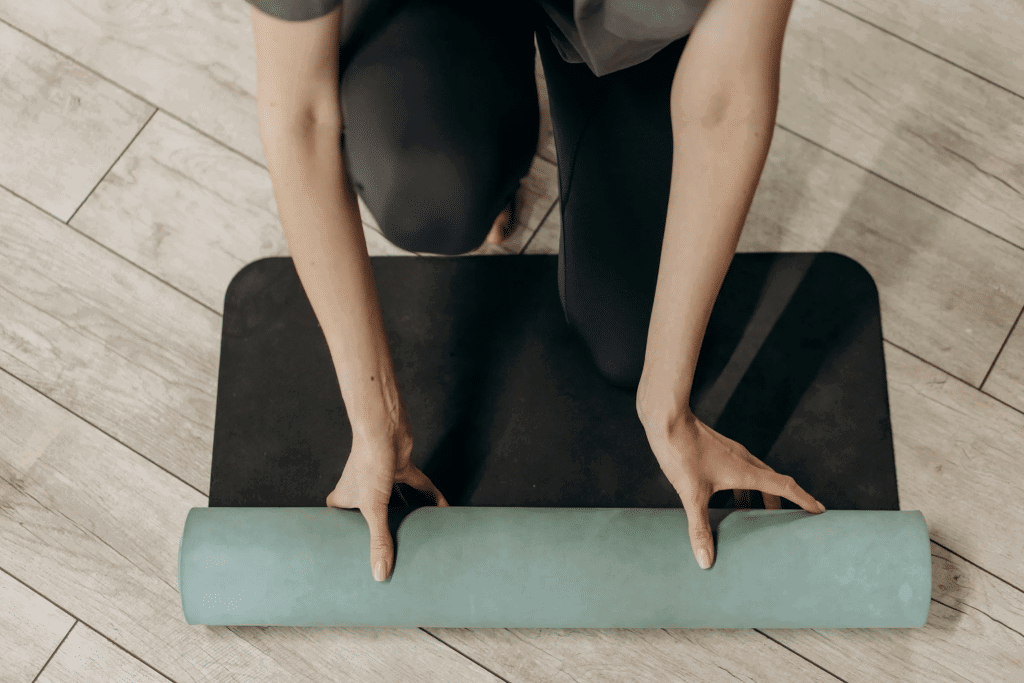Many female vocalists desire to expand their vocal range and explore the captivating realm of falsetto.
However, mastering this ethereal vocal technique can be a daunting endeavor.
This blog post will unveil practical strategies and exercises tailored specifically for female singers, empowering them to unlock the full potential of their falsetto register.
We will delve into the fundamentals of falsetto production, addressing common challenges females encounter and providing insightful tips on breath control, resonance, and vocal agility.
Additionally, we will explore seamless transitions between vocal registers and offer guidance on integrating falsetto into various musical genres, ensuring a well-rounded and versatile vocal performance.
Understanding Falsetto

Falsetto is a vocal technique that enables female singers to reach higher notes by utilizing a lighter, more airy quality in their voice.
When employing falsetto, female vocalists engage the edges of their vocal cords, resulting in a more delicate and flute-like sound than their chest voice.
In this register, the vocal cords are partially open, producing a higher-pitched and softer tone.
Renowned artists like Mariah Carey, Christina Aguilera, and Ariana Grande have showcased their mastery of falsetto, seamlessly integrating it into their performances to create a captivating and distinctive vocal style.
The use of falsetto in female singing has evolved, rooted in various musical traditions and genres.
Characteristics and Sound Qualities of Falsetto
Grasping the unique sound qualities of falsetto is a vital step in mastering this vocal technique.
A breathy and airy quality characterizes the falsetto voice.
It produces a higher pitch than the chest and head voices, often sounding more delicate and light.
By incorporating falsetto, female singers can add emotional depth and versatility to their performances, allowing them to convey a wide range of emotions and musical styles.
To better understand the distinct sound of falsetto, listeners can refer to popular songs where falsetto is prominently featured, such as “Love on Top” by Beyoncé or “Chandelier” by Sia.
Differentiating Falsetto from Chest and Head Voice
Distinguishing between falsetto, chest, and head voice is crucial for effectively utilizing each vocal register.
The chest voice, or the full voice, is richer and more powerful, resonating primarily in the chest cavity.
In contrast, the head voice is higher and resonates in the head and facial areas.
Falsetto lies above the chest voice and is lighter than the head voice.
It is often employed for extremely high notes.
Female singers can practice exercises that focus on identifying and controlling the chest voice, head voice, and falsetto to develop the ability to transition smoothly between these vocal registers.
Visual aids, such as diagrams or illustrations of the vocal cords in different registers, can further enhance understanding of the distinct mechanisms involved in producing each sound.
Identifying Your Falsetto Range
Identifying your falsetto range is crucial for female singers looking to develop and master this vocal technique.
Understanding the specific range in which you can comfortably produce a falsetto sound allows you to tailor exercises and techniques to your needs, optimizing your progress and avoiding strain on your vocal cords.
1. Typical Falsetto Range for Female Singers
Generally, the falsetto vocal range for female singers spans from approximately F5 to F6, though individual ranges may vary due to factors such as vocal characteristics and training.
You must know this general range to set realistic goals and expectations as you embark on your falsetto development journey.
Methods to Discover Your Unique Falsetto Range Self-Assessment Techniques:
- Singing Scales: Start from a comfortable middle note and sing scales upward until the highest note can be comfortably sustained with a light, airy quality.
- Sirening Exercise: Make a siren-like sound from the lowest to the highest note, noting the highest pitch reached easily.
- Vowel Sounds: Experiment with different vowel sounds (e.g., “ah,” “ee”) while ascending in pitch to find the highest note where the falsetto can be sustained without strain.
2. Practical Tips and Considerations
- Regular Practice: Consistent practice is key to refining and expanding your falsetto range.
- Vocal Health: Stay hydrated and warm up properly before using falsetto exercises to protect your vocal cords.
- Patience and Persistence: Expanding your falsetto range takes time and dedication, so approach your practice with patience and perseverance.
3. Working with a Vocal Coach
Seeking guidance from a professional vocal coach can be invaluable in accurately identifying and expanding your falsetto range.
Vocal coaches employ targeted exercises and provide real-time feedback to help you explore and refine your falsetto abilities.
4. Recording and Playback
Recording your vocal exercises and practicing with playback can help you identify your most comfortable note in falsetto.
By listening back, you can compare different attempts and track your progress over time.
Knowing and expanding your falsetto range is essential to developing this vocal technique as a female singer.
Regular practice, combined with professional guidance if needed, can help you unlock the full potential of your falsetto range, enhancing your vocal versatility and overall performance capabilities.
Embrace the journey and celebrate each milestone along the way.
Strengthening and Extending Falsetto

Developing a strong falsetto voice involves improving breath control and practicing specific vocal exercises to extend the falsetto range and enhance vocal strength.
1. Importance of Breath Control
Breath control is crucial for sustaining notes and achieving a stable falsetto.
Proper breath control supports the vocal cords and helps maintain consistent airflow, which is essential for producing a clear and steady falsetto tone.
Tips
- Practice diaphragmatic breathing to enhance breath support.
- Maintain a relaxed posture to allow for optimal lung expansion.
2. Vocal Exercises
- Core Idea: Using targeted vocal exercises strengthens the falsetto range and improves control.
- Explanation: Regular practice of these exercises helps develop the muscles involved in producing falsetto, leading to greater vocal agility and endurance.
Sirening
A vocal exercise involves sliding the voice smoothly from the lowest to the highest pitch and back down.
How to Practice
- Start at a comfortable low pitch and gradually continuously slide up to your highest pitch.
- Reverse the process, sliding back down to the starting pitch.
Benefits: Enhances vocal range and smooth transitions between notes.
Lip Trills
A technique where you vibrate your lips while making a sound.
How to Practice
- Relax your lips and blow air through them, producing a buzzing sound.
- Add pitch variations, moving up and down the scale.
Benefits: Improves breath control and vocal flexibility.
Vowel-based Exercises
Exercises that focus on singing specific vowels to improve vocal tone and control.
How to Practice
- Sing vowels like “ah,” “ee,” and “oo” at different pitches.
- Focus on maintaining a consistent tone and clear sound.
Benefits: Enhances resonance and articulation in the falsetto range.
Transitioning Between Registers
Achieving smooth transitions between the chest voice and falsetto is crucial for a balanced and seamless vocal performance.
Mastering this skill allows female singers to navigate their entire vocal range with ease and control.
1. Techniques for Smooth Transitions
Between Chest Voice and Falsetto Transitioning between vocal registers can be challenging, as it involves a shift in how the vocal cords vibrate.
To achieve a smooth transition, consider the following techniques
- Focus on breath control: Proper breath support helps maintain control while shifting registers.
- Engage in relaxation techniques: Keeping the throat and vocal cords relaxed can help avoid strain and breaks.
2. Exercises to Blend Chest and Falsetto
Voices Practicing specific exercises can help blend the chest and falsetto voices effectively.
Octave Slides
Gradual sliding between low and high notes in an octave.
How to perform
- Start on a comfortable chest voice note and slide up to a higher note in falsetto.
- Focus on maintaining a consistent tone and smooth transition without breaks.
Benefits
- It helps identify the breaking point and work through it.
- Improves control and fluidity between registers.
Sirening Through Vocal Breaks
Vocal exercise that mimics the sound of a siren, moving through different pitches.
How to perform
- Begin at a low chest voice note, gradually increase pitch to the highest comfortable note, and then back down.
- Ensure a smooth, continuous sound throughout the exercise.
Benefits
- Aids blending chest and falsetto voices by practicing transitions over a wide range.
- Enhances vocal agility and control.
Regularly practicing these techniques and exercises is essential for improving transitions between registers and achieving a well-rounded vocal performance.
Incorporate them into your daily vocal routine to develop seamless transitions and unlock your full vocal potential.
Maintaining Vocal Health

1. Hydration and Proper Breathing Techniques
Essential Role of Hydration
Staying hydrated is crucial for vocal health.
It helps keep the vocal cords lubricated and reduces the risk of strain and injury.
Water is essential for maintaining vocal cord flexibility and preventing dryness or irritation.
Daily Hydration Tips
To maintain proper hydration, aim to drink an adequate amount of water daily (consult with a professional for specific recommendations).
Avoid dehydrating substances like caffeine and alcohol, and consider using humidifiers in dry environments.
Proper Breathing Techniques
Diaphragmatic breathing is essential for singers as it supports sustained singing and reduces tension on the vocal cords.
To practice diaphragmatic breathing, place one hand on your abdomen and inhale deeply, allowing your belly to expand.
Exhale slowly, feeling your abdomen contract.
Focus on breathing from your diaphragm rather than your chest.
2. Vocal Warm-Ups
Benefits of Warming Up
Vocal warm-ups are vital for increasing blood flow to the vocal cords, improving flexibility, and reducing the risk of vocal strain.
A proper warm-up routine prepares the voice for the demands of singing and minimizes the risk of injury.
Effective Warm-Up Routines
Gentle humming, lip trills, and scales are examples of effective vocal warm-up exercises.
Humming helps gently engage the vocal cords, lip trills promote breath control and flexibility, and scales help warm the voice across its range.
Daily Warm-Up Practice
Make vocal warm-ups a daily routine, even on non-performance days.
Establish a structured warm-up routine that you can follow consistently before practice sessions or performances.
3. Avoid Vocal Fatigue and Strain
Recognizing Signs of Vocal Fatigue
Early signs of vocal fatigue include hoarseness, difficulty reaching certain notes, and throat discomfort.
Be attentive to these signs and take immediate action to prevent further strain.
Preventative Measures
To prevent vocal fatigue, take regular breaks during practice, avoid yelling or whispering, and speak at a comfortable volume.
Additionally, ensure adequate hydration and proper vocal technique.
Recovery Strategies
If you experience vocal fatigue or strain, prioritize rest and allow your voice to recover.
Increase hydration, and consider gentle vocal exercises under the guidance of a vocal coach.
If problems persist, consult a healthcare professional.
Maintaining vocal health is essential for female singers.
It involves proper hydration, breathing techniques, regular warm-ups, and preventative measures against vocal fatigue and strain.
Make vocal health a priority in your daily routine to ensure long-term vocal performance and enjoyment.
Treat your voice carefully and respectfully, as it is a precious instrument.
Those interested in deepening their understanding of vocal health and techniques should consider exploring additional resources, such as books, online courses, or working with a qualified vocal coach.
Overcoming Common Challenges
When developing your falsetto, you’ll likely encounter several challenges.
These can range from navigating the break between chest and falsetto voice to understanding physiological differences and maintaining a consistent practice.
Here, we address these common obstacles and provide strategies to help you overcome them.
1. Navigating the Break Between Chest Voice and Falsetto
Understanding the Break
The vocal break refers to the transition between the chest voice and the falsetto register.
This occurs due to the shift in how the vocal cords vibrate when moving between these registers.
Exercises to Blend Registers
Exercises like octave slides (gradually sliding between low and high notes within an octave) and sirening (mimicking the sound of a siren by smoothly transitioning between low and high pitches) can help blend the chest and falsetto voices.
Tips for Seamless Transitions
Focus on maintaining consistent breath support, relaxing the throat muscles, and practicing transitions slowly to avoid noticeable shifts between registers.
2. Addressing Physiological Differences in Falsetto Production
Female vs. Male Falsetto
While the fundamental mechanism of falsetto production is similar across genders, physiological differences exist.
For example, female singers may experience a more seamless transition between their chest and head voice.
Tailoring Techniques
These physiological differences may require tailoring certain techniques.
Experiment with different exercises and approaches to find what works best for your unique vocal anatomy.
Leveraging Unique Qualities
Understand and embrace your falsetto voice’s unique qualities and use them to develop a distinctive and authentic vocal style.
3. Strategies for Consistent Practice and Improvement
Daily Routine
Consistent practice is crucial for developing your falsetto.
Establish a daily routine that incorporates targeted exercises and allows for focused practice sessions.
Tracking Progress
Keep a practice journal to track progress, note challenges, and document successful strategies.
This will help you identify areas for improvement and celebrate milestones.
Professional Guidance
Consider working with a qualified vocal coach who can provide personalized feedback, tailored exercises, and guidance to help you overcome specific challenges.
Incorporating Feedback
Listen to and incorporate feedback from your vocal coach or peers into your practice sessions.
This will help you refine your technique and address areas that need improvement.
By understanding and addressing these common challenges, you can make significant progress in developing a strong and controlled falsetto.
Regular practice, tailored exercises, and professional guidance are key to overcoming obstacles and enhancing your vocal abilities.
Embrace the journey, stay patient and persistent, and celebrate each milestone.
Conclusion
Developing a strong, expressive falsetto is invaluable for female vocalists seeking to expand their range and versatility.
By understanding the mechanics of falsetto, practicing targeted exercises, and integrating this vocal technique seamlessly into various musical styles, you can unlock new dimensions of artistry and captivate audiences with the ethereal beauty of your voice.
Consistent practice, proper breath control, and maintaining vocal health are essential for mastering your falsetto.
Embrace the challenges, celebrate your progress, and don’t hesitate to seek guidance from experienced vocal coaches.
Take the first step today towards elevating your performances and exploring the boundless potential of your falsetto voice.
Commit to this journey, and you’ll soon discover the power of this unique vocal register in expressing your deepest emotions and leaving a lasting impact on your listeners.
Frequently Asked Questions
Can Any Female Singer Learn to Sing in Falsetto?
Most female singers can develop their falsetto register with proper training and exercises.
Is Falsetto Suitable for All Music Genres?
While suitable across genres, falsetto is prominent in pop, R&B, and folk music.
Will Singing in Falsetto Strain the Vocal Cords?
When approached with proper technique and vocal care, singing in falsetto should not strain the vocal cords.
How Long Does It Take to Strengthen the Falsetto Range?
The timeline varies individually, but consistent practice leads to noticeable improvement.
Can Falsetto Be Used to Convey Powerful Emotions in a Song?
Yes, the falsetto can convey powerful, passionate performances with skillful dynamics and vocal control.




















